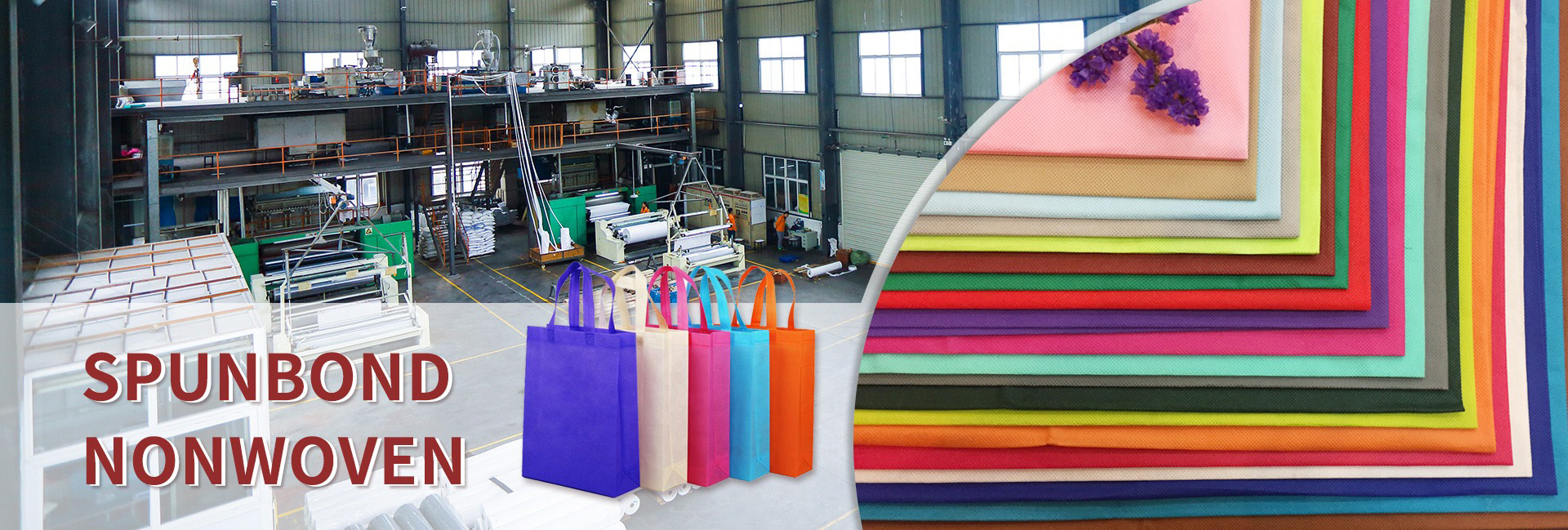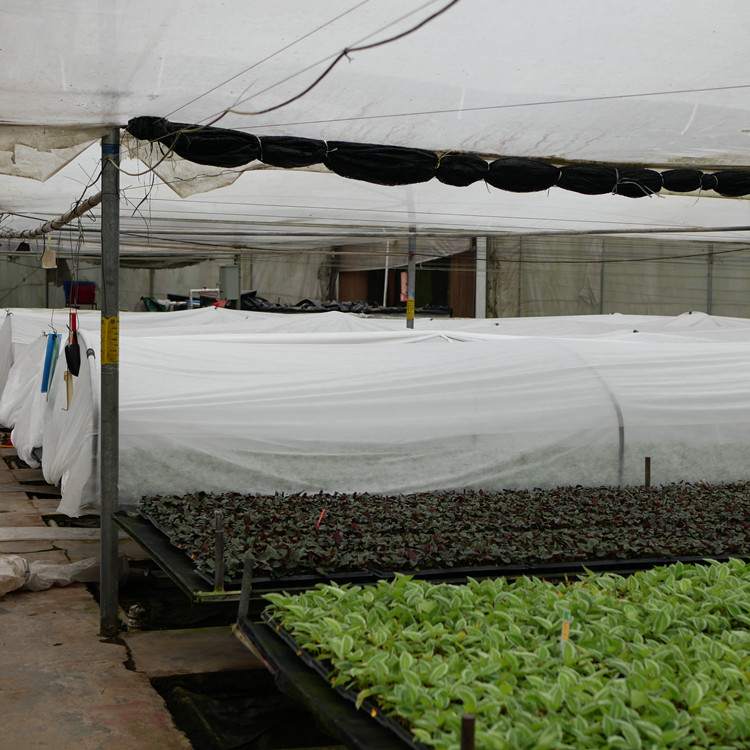The correct use of non woven fabrics for rice seedling cultivation
1.Advantages of non-woven fabrics for rice seedling cultivation
1.1 It is both insulated and breathable, with gentle temperature changes in the seedbed, resulting in high quality and strong seedlings.
1.2 No ventilation is required for seedling cultivation, which saves labor and labor. The non-woven fabric has light wear and tear, making it particularly suitable for late sowing seedling fields.
1.3 Low water evaporation, reduce watering frequency and amount.
1.4 Non woven fabric is durable and washable, and can be used continuously for more than 3 years.
1.5 arched seedling cultivation requires only one non-woven fabric per bed surface, while plastic film requires 1.50 sheets, which is cheaper than using plastic film and has less environmental pollution.
2. Seedling preparation
2.1 Prepare sufficient materials for seedling cultivation: non-woven fabrics, racks, nutrient soil, regulators, etc.
2.2 Choose a suitable breeding site: Generally, choose a flat, dry, easily drained, and windward plot with a sunny view; To cultivate seedlings in Honda, it is necessary to choose a relatively high terrain plot and build high platforms to achieve dry cultivation conditions.
2.3 Choose suitable seedling cultivation methods: ordinary dry seedling cultivation, soft disk seedling cultivation, isolation layer seedling cultivation, and bowl tray seedling cultivation.
2.4 Ground preparation and bed making: generally 10-15cm, with a drainage ditch depth of 10cm. When raising seedlings in high and dry dry dry fields and garden fields, it is sufficient to sit on a flat bed or bed slightly high.
3. Seed processing
Before sowing, choose good weather to sun seed for 2-3 days. Use salt water to select seeds (20g of salt per kilogram of water). After selection, rinse them thoroughly with water. Soak the seeds in 300-400 times seed soaking solution for 5-7 days until the buds break.
4 .Sowing
4.1 Determine reasonable sowing time and quantity. Generally speaking, the date after the seedling age, which is the number of days rice seedlings grow in the seedbed, is calculated backwards from the planned transplanting date. For example, if transplanting is planned on May 20th and the seedling age is 35 days, then April 15th, which is the sowing date, will be pushed back 35 days from May 20th. At present, rice transplantation mainly uses medium seedlings, with a seedling age of 30-35 days.
4.2 Preparation of Nutrient Soil. Use fully decomposed farmyard manure, pour it fine and sieve it, and mix it with garden soil or other guest soil in a ratio of 1:2-3 to form nutrient soil. Add 150g of seedling strengthening agent, and mix the soil evenly.
4.3 Sowing Procedure. Sit on the bed carefully and pour water thoroughly; Adhere to the principle of sparse sowing and strong seedling cultivation; Dry seedling cultivation involves sowing 200-300g of dry seeds per square meter, and the amount of seeds used for seedling cultivation can be appropriately reduced using soft or throwing trays.
Seeds should be evenly sown, and after sowing, use a broom or smooth wooden board to pat or press the seeds into the soil on three sides. Then evenly cover with a layer of 0.50cm of sieved loose fine soil to seal and kill the grass, and cover with plastic film. Immediately cover the bed surface with an ultra-thin plastic film that is as wide as the bed surface and slightly longer than the bed surface after closing and weeding, in order to increase temperature and maintain moisture, promote early and rapid emergence of seedlings. After the seedlings emerge, remove this layer of plastic film in a timely manner to prevent high-temperature burning of the seedlings.
4.4 Cover with non-woven fabric. Covered with arches. Insert the skeleton according to the local practice of wide bed open and closed agricultural film seedling cultivation, cover it with non-woven fabric, press tightly with soil around, and then tie the rope.
Skeleton free flat covering. The method is to build a soil ridge around the bed with a height of 10-15cm, and then stretch the non-woven fabric flat. The four sides are placed on the ridge and pressed tightly with soil. Tripping windbreak ropes and other reference agriculture.
5. Seedling field management
Non woven fabric seedling cultivation does not require manual ventilation and cultivation, and there is also a rare occurrence of bacterial wilt. Therefore, as long as attention is paid to water replenishment and timely extraction of plastic film.
5.1 Membrane extraction and water replenishment. The water utilization efficiency of non-woven fabric seedling cultivation is high, and the total watering frequency during the seedling stage is less than that of plastic film seedling cultivation. If the bed soil moisture is insufficient, uneven, or the surface soil turns white due to improper seedling cultivation operations, use a watering can to spray directly on the cloth. If the bed soil is too wet or even waterlogged when raising seedlings in Honda or low-lying plots, it is necessary to remove the bed surface film and air the bed to remove moisture, prevent rotten buds and bad seeds, and promote root development. When replenishing water, firstly, it should be thoroughly replenished, and secondly, it should be done in the morning or evening to avoid the high temperature at noon. At the same time, it is necessary to use dried water to avoid “cold water pouring on the hot head”. Thirdly, it is necessary to use a fine eye watering can to spray instead of flooding.
When the rice seedlings have a green head, the plastic film that is laid flat on the bed surface should be pulled out, and then the exposed surface should be restored and compacted.
5.2 Topdressing. A high-quality rice seedling and seedling strengthening agent (also known as a regulator) with sufficient nutrients and a reasonable ratio of nutrients can ensure that one fertilization can meet the nutrient needs of the seedlings throughout the entire seedling period, and generally does not require further fertilization.
5.3 Prevention and control of bacterial wilt. Putting prevention first, including preparing high standard seedling nutritionists with appropriate pH values, creating good conditions for the development of rice seedling roots, strengthening the management of temperature, humidity, and nutrients in the seedling bed, and cultivating robust seedlings with strong disease resistance. In addition, using appropriate special agents can also achieve good control effects.
6. Precautions for Textile Seedling Cultivation
6.1 Choose non-woven fabrics specifically designed for rice seedling cultivation.
6.2 Strictly prepare nutrient soil for seedling cultivation, and high-quality rice seedling strengthening agents and reasonable proportion of nutrient soil for seedling cultivation should be selected.
6.3 Strictly carry out seed germination and early auxiliary warming. The insulation effect of non-woven fabrics for rice seedling cultivation is not as good as that of agricultural films. To ensure early, complete, and complete emergence of seedlings, it is necessary to strictly carry out seed germination according to the operating procedures; Secondly, it is necessary to cover the bed with plastic film or cover the shed with old agricultural film in the early stage of seedling cultivation to improve the insulation effect.
6.4 Promptly remove auxiliary heating measures. During the period from the needle green head to 1 leaf and 1 heart of the seedlings, the plastic film laid on the bed surface should be promptly removed, and the plastic film or old agricultural film covered with non-woven fabric should be removed.
6.5 Timely watering. To save water and ensure uniform watering, use a watering can to directly sprinkle on the cloth. The arc of the arch shed is too large, and it needs to be uncovered and watered.
6.6 Flexibly grasp the timing of unveiling. When approaching the transplanting period, special attention should be paid to changes in external temperature to avoid high temperatures causing seedlings to grow excessively in the non-woven shed. It should be exposed in a timely manner according to the specific situation. If the external temperature is low and the seedling growth is not strong, it can be uncovered that night; If the external temperature is too high and the seedlings are growing too vigorously, they should be exposed early; Generally, when the temperature inside the shed continues to exceed 28 ℃, the fabric should be removed.
Post time: Nov-12-2023


